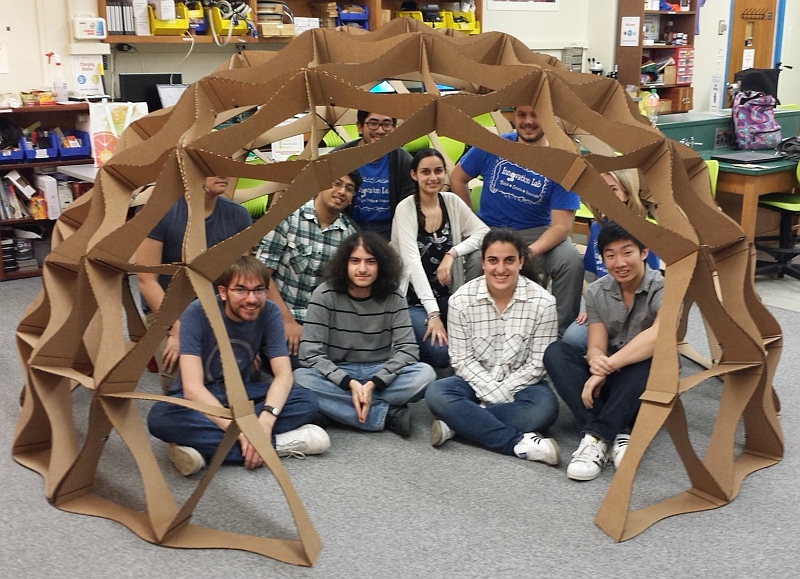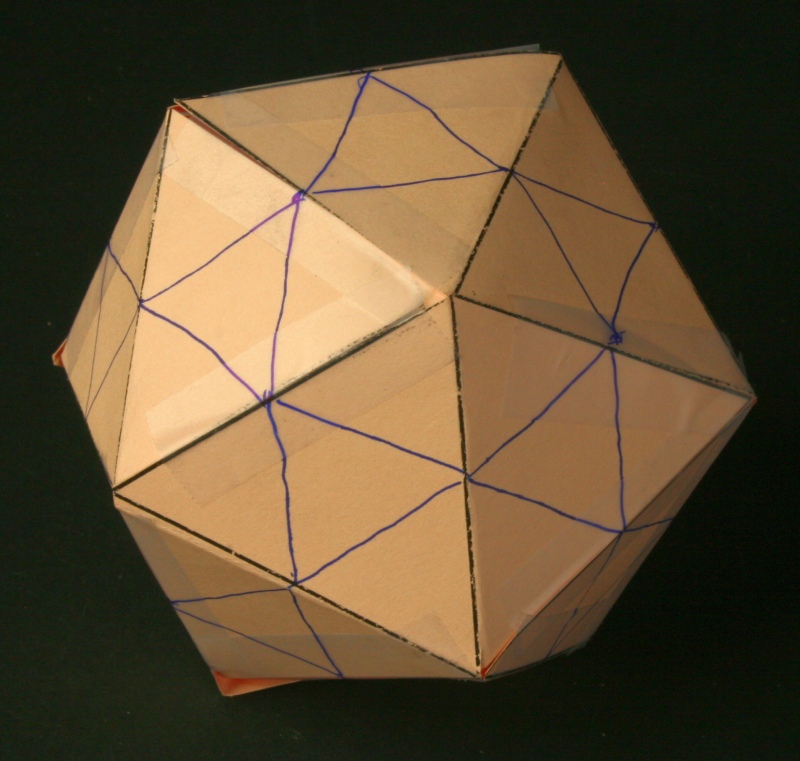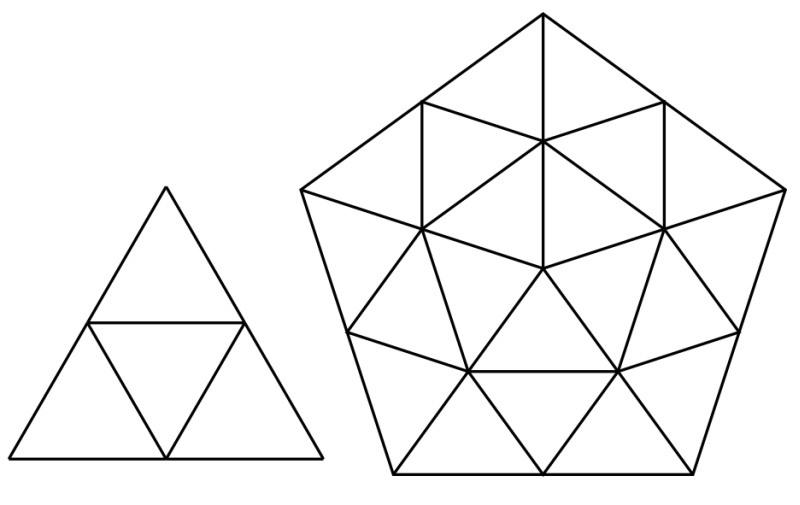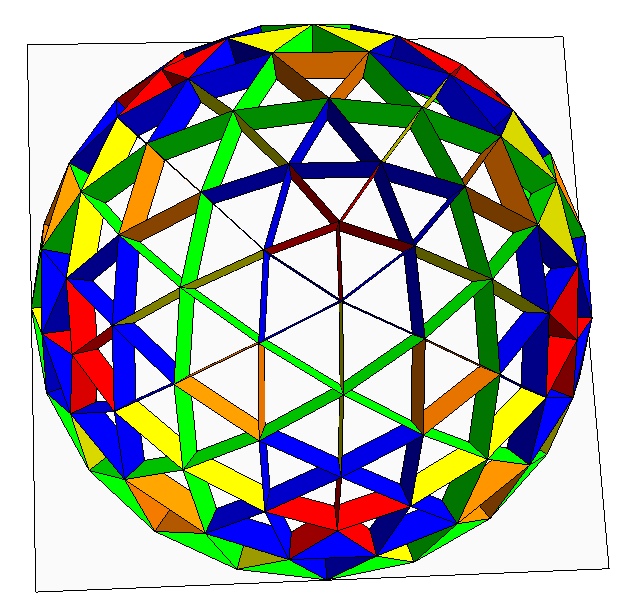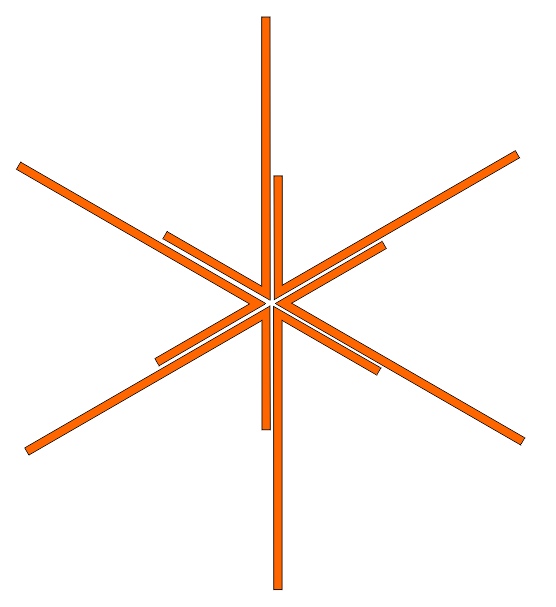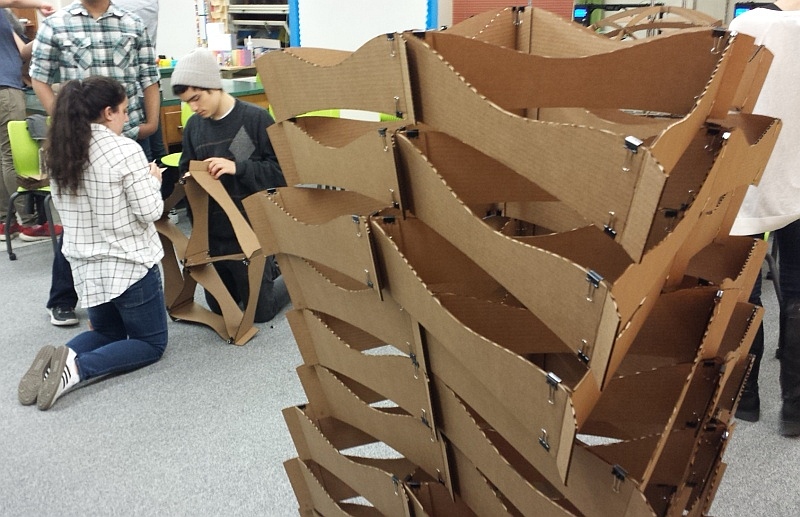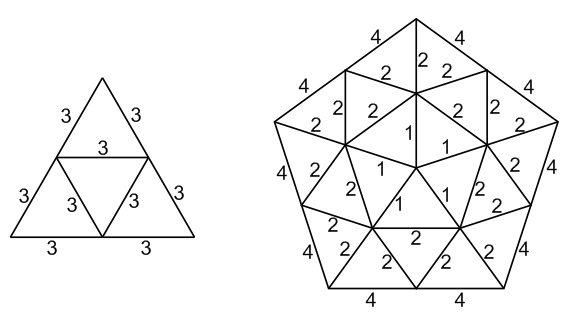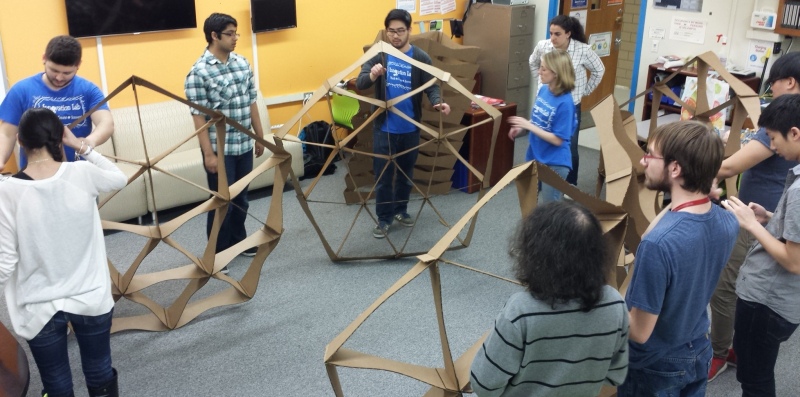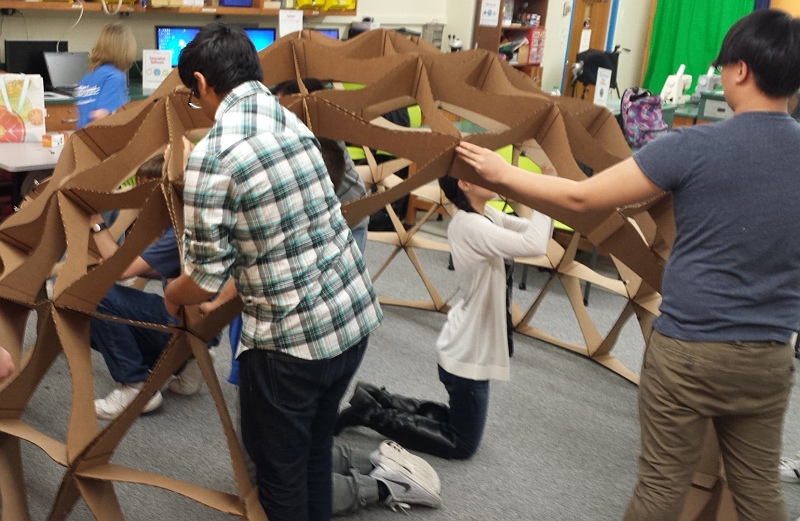Time Required: 3 hours
Materials:
- Corrugated cardboard cut with this
template (30 of type I; 90 of type II; 90 of type III;
50 of type IIII)
- Glue (for wood or paper)
- Glue brushes
- Black binder clips (100 to 200, small or medium)
- Paper icosahedron from the
paper dome workshop
- Markers
Notes:
1. The
paper dome workshop is an
introduction to the mathematics underlying this activity and
should be done first as it provides the necessary
background. Save the marked paper icosahedron from that
activity to use here. The
cardboard
dome workshop is also useful, as it familiarizes students
with the gluing technique and the structure of the joints.
2. The template files are designed for a dome ten feet in
diameter. They can be adapted to other sizes, but all
parts must be scaled by the same factor.
3. The cardboard struts can be cut with a band saw or
laser-cutter. The laser-cutter file includes a dotted line
for folding and the part number (a Roman numeral I-IIII that can
be read front or back!) If using a band saw, mark the fold
line by hand and write the part number on each piece.
Part A. Minds-On
1. Refer back to the paper dome workshop to review the paper
icosahedron that was divided into triangles reducing the edge
length to half. We called this a "frequency 2 icosahedral
structure".
2. Ask students to visualize and create a frequency 4
icosahedral structure by dividing each small triangle edge in
half again. Instruct students to color in the central four
small triangles of each icosahedral face as shown above.
3. Show students the above image or draw it on the board so they
understand that the frequency-4 dome can be made from two types
of modules: triangles and pentagons.
4. Ask students to visualize how the icosahedron will be cut in
half on an equator to make a hemisphere. Lead students to
determine how many triangle modules and how many pentagon
modules are required. [Answer: 10 triangles and 6
pentagons make the full hemisphere, but we will omit one
pentagon to create a doorway.]
5. Let them imagine that the vertices are adjusted radially so
they all lie on a sphere. As a consequence there will be a
variety of strut lengths. The image above depicts strut lengths
by color coding. The calculation of strut lengths is
worked into the template above, however this calculation can be
performed by students as an extension exercise if they have a
trigonometry background.
Part B. Hands-On

